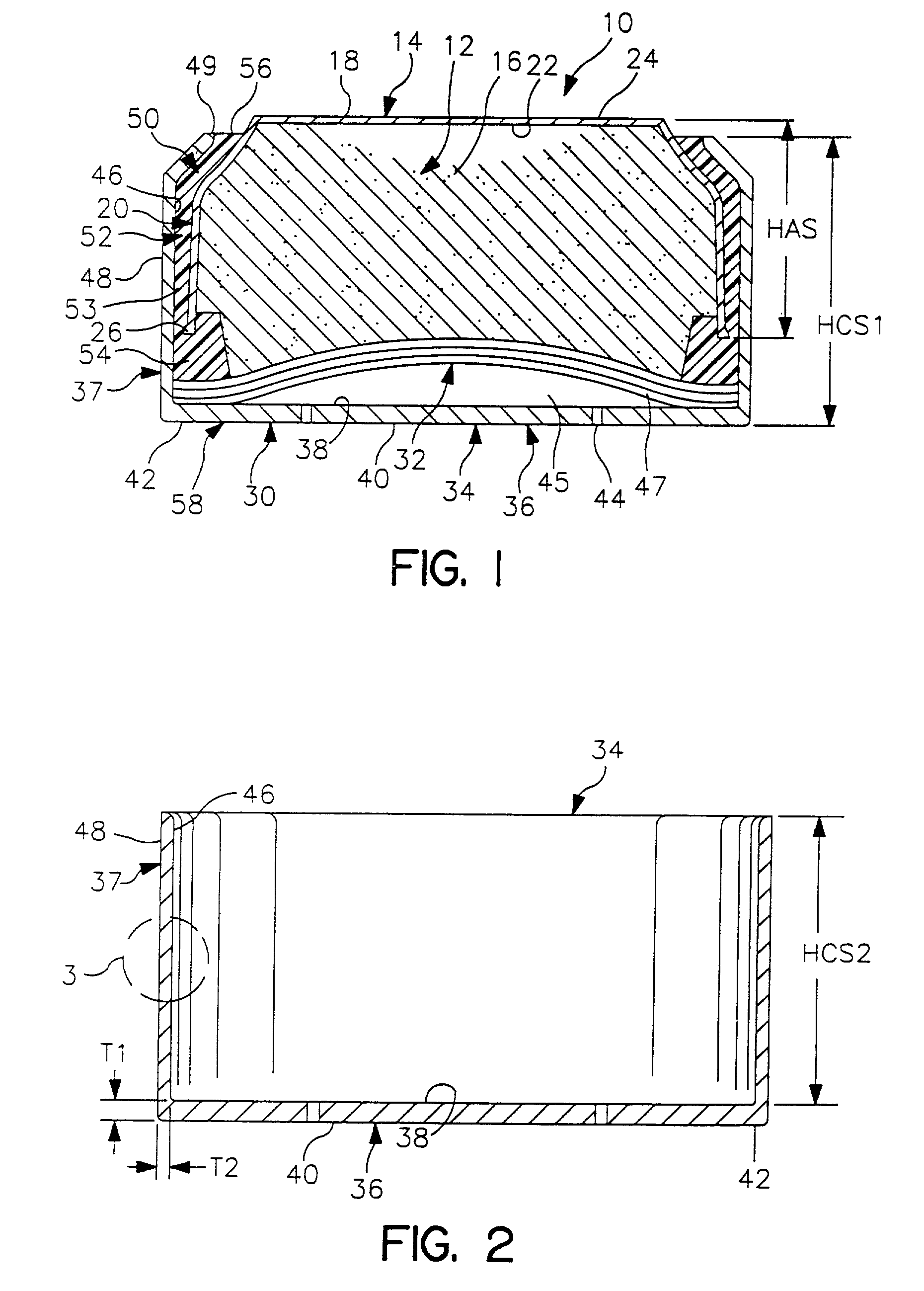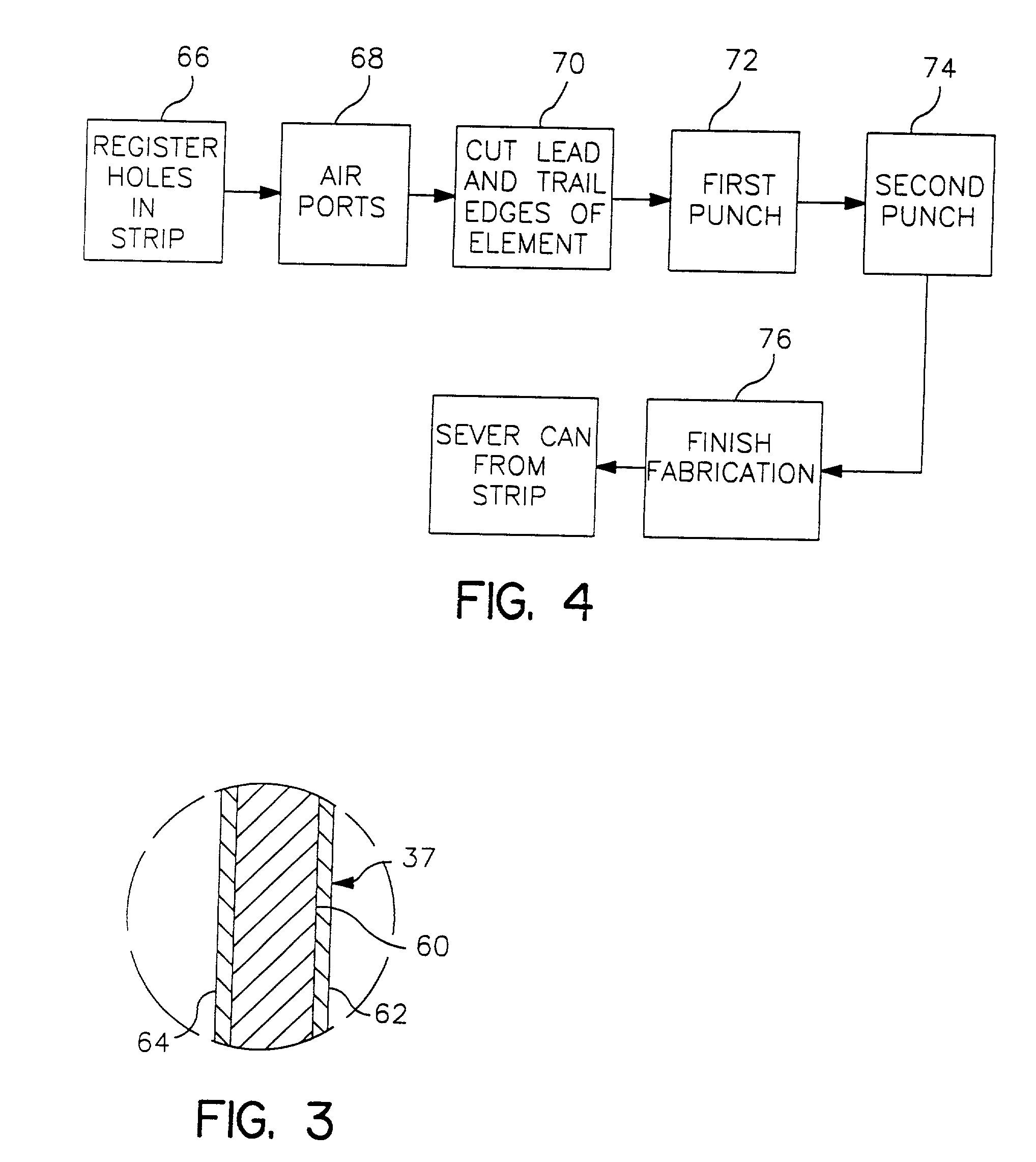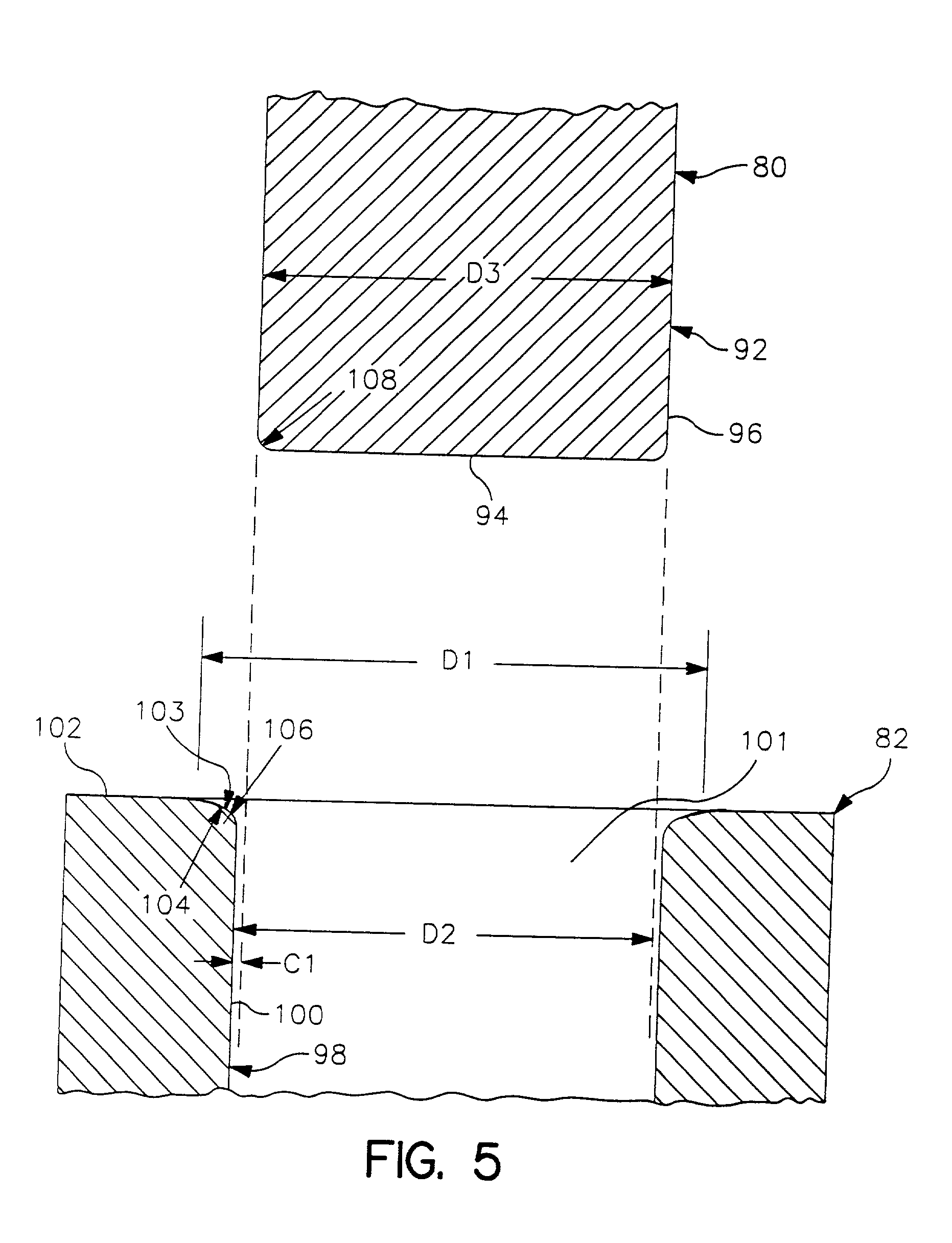Air depolarized electrochemical button cell
a button cell and electrochemical technology, applied in the direction of cell components, cell components, jackets/cases materials, etc., can solve the problems of wasting volume that could be occupied, affecting the ability to fabricate elements, and changing the selection of materials, so as to achieve a smooth surface finish
- Summary
- Abstract
- Description
- Claims
- Application Information
AI Technical Summary
Benefits of technology
Problems solved by technology
Method used
Image
Examples
example
[0086] Referring to FIGS. 5-6, as punch 80 moves toward and into cavity 101, bottom wall 94 of the punch engages the top surface of the respective work piece element of metal strip 84, and pushes the work piece element into cavity 101 ahead of the bottom wall.
[0087] As the punch enters the cavity, the clearance between the outer surface of the punch and the inner surface of side wall 98 of the die is less than the thickness of the metal strip. Accordingly, as the metal strip is punched into the cavity, the metal strip is necessarily thinned.
[0088] The mechanism for thinning the metal strip is set up by the utilization of the double radius lip 103 which defines the intersection of initializing land 102 and inner side wall 98. Applicants have discovered that a single small, or tight, radius as at 106 is satisfactory for creating a desired shape for the can, but risks tearing or cracking the metal being so formed; and that a single larger radius as at 108 forms without metal failure, b...
PUM
| Property | Measurement | Unit |
|---|---|---|
| diameter | aaaaa | aaaaa |
| diameter | aaaaa | aaaaa |
| diameter | aaaaa | aaaaa |
Abstract
Description
Claims
Application Information
 Login to View More
Login to View More - R&D Engineer
- R&D Manager
- IP Professional
- Industry Leading Data Capabilities
- Powerful AI technology
- Patent DNA Extraction
Browse by: Latest US Patents, China's latest patents, Technical Efficacy Thesaurus, Application Domain, Technology Topic, Popular Technical Reports.
© 2024 PatSnap. All rights reserved.Legal|Privacy policy|Modern Slavery Act Transparency Statement|Sitemap|About US| Contact US: help@patsnap.com










